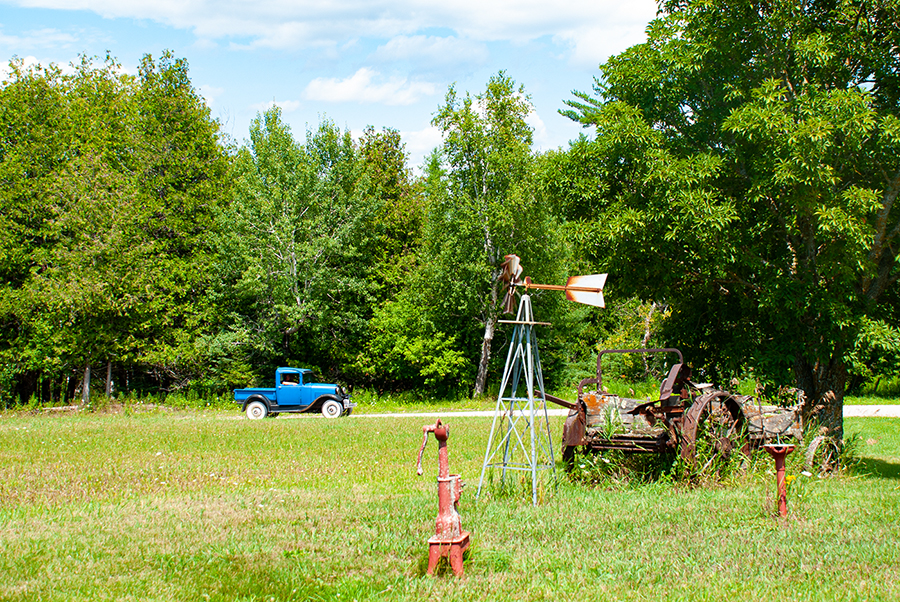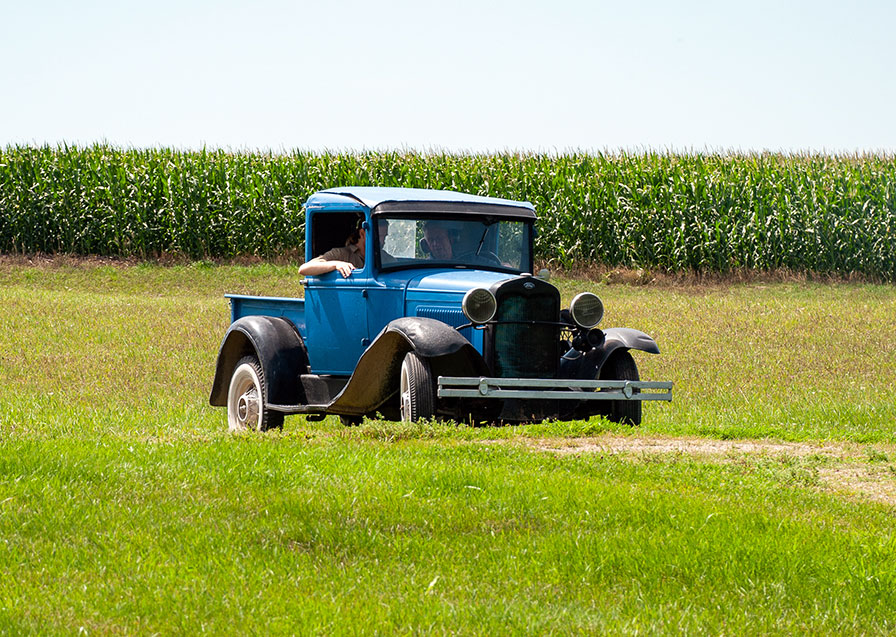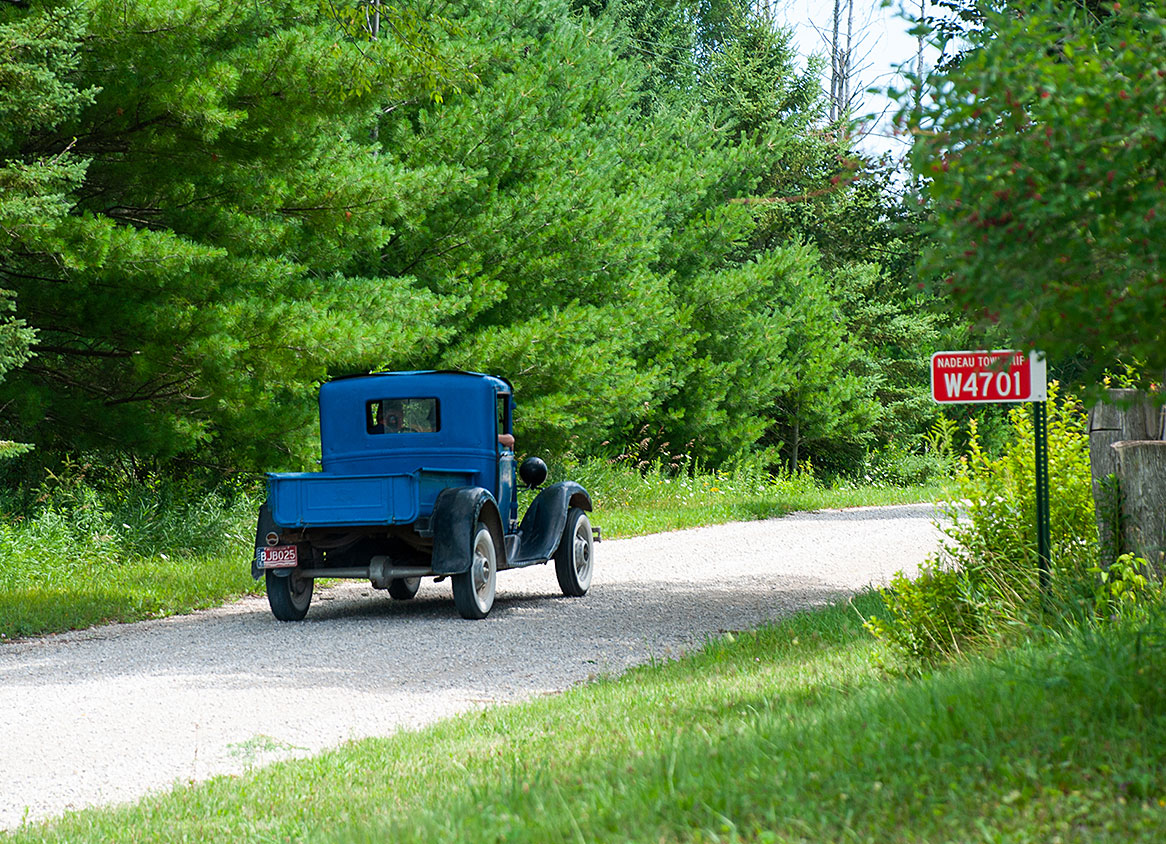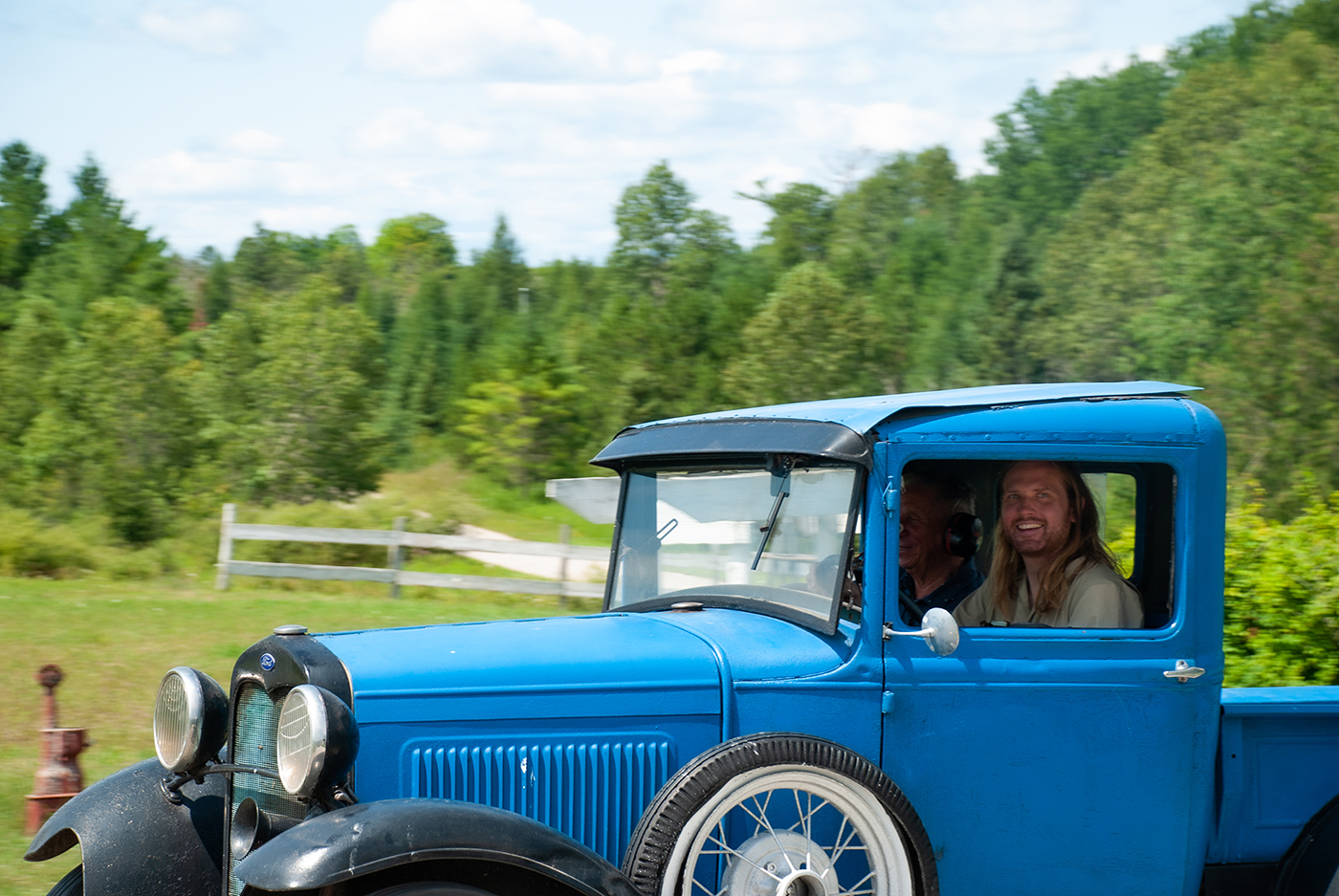Story and photos by S. Scott Callan
We were sitting at Gene’s dining room table discussing Jim Clark’s heroic drive at Watkins Glen in the 1963 US GP. Clark’s car wouldn’t fire on the line at the start, then it came alive and so did his drive from the back. Finishing third. He had driven out to the Glen to see Clark race.
Yep, Gene was a real Clark guy. Lotus too of course. All my derogatory Chapman, “Don’t take that bolt for a ride!” comments, quoted to me by Stirling Moss, had no effect. His ownership of a perfect Lotus Cortina in the day had sealed his enthusiasm. Or was it fate?”
As we sat in the dining room of the family farm in rural Michigan, it was obvious he was beyond redemption, but I continued on with a number of ‘Chubby’ Chapman stories. There was no getting around the fact that Jim Clark’s undeniable talent seemed to be tailor made for Chapman’s evolution of the Lotus. Clark was one of that generation that found their sea legs, and established their reputations, at the dawn of the midengine F1 car.
The conversation then ranged on to Gene’s Fiat 600. Driven in all weather while at his job in Milwaukee during the later 60s.
We had only been introduced a couple of weeks earlier by some local Alfa guys at an Italian car get-together at the Automobile Gallery in Green Bay. I hadn’t even known there was a respectable car museum in GB, or a Spring Italian get together there, much less a real Euro car guy whose farm was so close to ours.
While visiting our farm a week or so later, I loaned Gene a copy of Automobilist Century. A couple of weeks later, after reading it, he called and said, “Say, you’ve driven a lot of interesting cars, want to drive the old farm Model A? Been in the family since the war. It’s what I learned to drive in.”
The invitation to drive something new can never be turned down.
“Gene, I certainly would. I know someone who would also like to drive it, our son Miles who is here for his summer visit.”
“This is your son that went for the drive in the Nazca with its designer in your book?”
“It is. Actually he went on to apprentice for Fabrizio at Ital.”
So the date was set. Saturday. The day after tomorrow.
Driving Gene’s Model A truck over the vaguely graded gravel farm roads it was intended for put the experience into sharp focus.
First let’s put Gene’s Model A in sharp focus. It’s been in his family for seventy-odd years. Functioning from its purchase after the War as a tow-it, haul-it farm truck. The engine has never been apart, though it has been run all these years on ‘drain oil’ from Gene’s uncle’s garage. It does seem to have benefited from fresh can oil following the closure of his uncle’s garage twenty years ago. Nor has the trans been stripped down.
The body panels speak to the preservation class stature of the truck. And here was the basis for an interesting discussion; there was not a speck of rust anywhere on the body or chassis. Even the exposed ‘tears’ in the steel were corrosion free. What kind of steel did Ford use for this thing? Was it vanadium steel? Miles, the researcher, looked into it and found that by the time this truck was made, 1930, Ford had developed 20 different steel alloys. One can only assume, without full analysis, and documented corroboration, that this torn and dented, paint chipped, and painted over old truck was a compilation of steel alloys. Another aspect that I pointed out, in Midwestern car rust observation, is that the entire truck was single panel construction. Most vehicles in the Midwest rust, rot, from the inside out; between the multiple steel panels of unibody, inner body and outer body panels.
So how was the driving?
The throttle was a small dot of a pedal, with over exited reaction. To the right of the little pedal dot was a foot rest. Which you did indeed rest the right side of your shoe on while gently regulating the reaction of the throttle. Kind of heel and toe reduced to a little toe and big toe restrained throttle response.
The little 200 cubic inch four was solid and fired in sequence with an untroubled timelessness that described its flathead design. Rev range between shifts? About 1100 rpm. While driving and discussing this rev range, Gene commented it was about the same as his new VW with its eight speed transmission.
The three-speed trans was solid and direct, in kind of a long shift lever, 1930s truck manner. Rather diametrically opposed to a Lotus trans.
The clutch was solid and when correctly applied and timed with the trans made for seamless shifts.
The brakes were of the most rural and direct rod variety. Engineered with the knowledge that you wouldn’t be dragging this baby down from Autobahn speeds, or even two-lane paved speeds beyond 55. But on the gravel roads driven, as intended, they were solid and sure footed.
The steering…not so much. To say the front wheels wandered a bit was to deny the fact that they had a mind of their own. Gene suggested that one had to relax into it. Perhaps an adult life of requiring the most precise reaction to high performance steering prevented my critical relaxation to fully appreciate the Saturday afternoon rural drive of this 1930’s carved gravel road surface that allowed me to visually identify where the front wheels were going to go, before the front wheels independently took us there. Miles, on the other hand, considered the entire experience to be one generation up from his ’65 Mustang, and fully identifiable, relaxing and entertaining.
The suspension provided a general sense of independence about the entire vehicle. Oh, it was solid all right. In an almost indestructible quality and manner. Having so proven itself as a fully operational and utilized vehicle since it rolled off the line in 1930. No, the sense of independence implied was summed up for Gene thusly; “You know Gene the last vehicle I drove that vibrated at so many different frequencies was a 289 Cobra. The engine, the frame, and the body all vibrated at different rates and rhythms.”
So it was here with Gene’s 1930’s Model A truck. In its percussion symphony of rattles and road feel vibrations it let you know it was still fully alive and ready, now in farm retirement, to entertain to the fullest extent of its wry and experienced humour.
More by the author:




about ’56 we dragged a friend’s parents’ wedding present a out of their garage. it fired right up. it had a compression ratio of 7.25:1–it says so cast into the head. i think it said ‘police special’ or something. i was told it was also called a denver (high altitude) head. i’ve had so-called model a experts tell me no such thing existed! like the guy waaaay back who walked up to our honda 600 at a new car show and said ‘honda doesn’t make cars!’
Rjay head ?